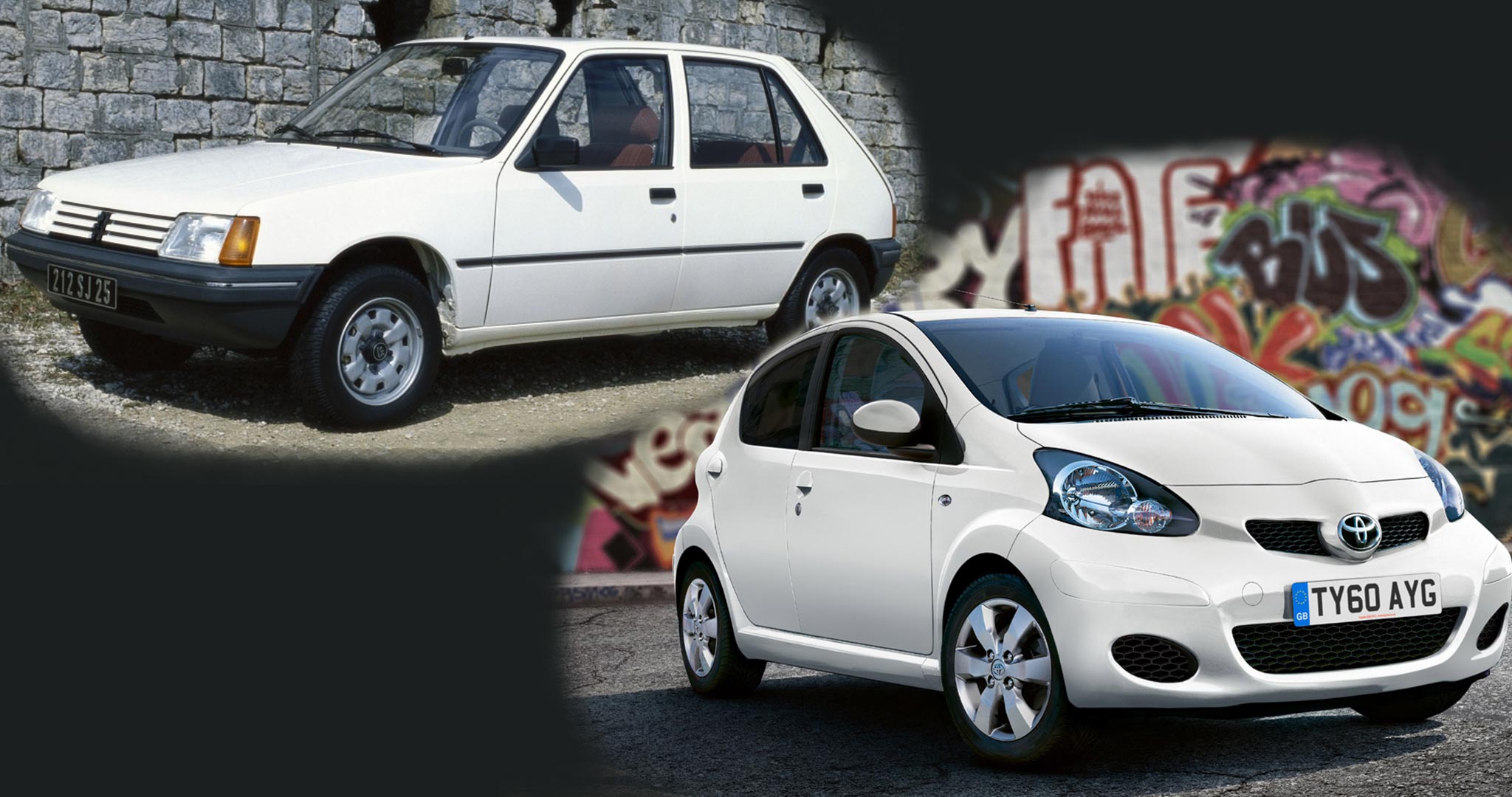My mother doesn’t change her car very often: her last change was in 1991, from a thirteen-year-old Fiat 128 to her still-current, Zen-basic, 1-litre Peugeot 205. So basic in fact, that it doesn’t even possess a clock, let alone advanced toys like a radio. The upside of this is that it represents motoring at its most focussed and basic, with nothing to distract you from the act of driving — and with such skinny tyres, you can have huge fun at very low and genuinely legal speeds. The late James Hunt used to drive an old Austin A30 van for exactly the same reasons. The Pug also possesses supremely good all-round visibility from narrow pillars and a low waistline. Its absolutely direct handling is a delight and the only downside is its criminally heavy steering, making three-point turns an exercise in forearm-pumping and giving my mother a seriously dangerous left hook. That little Peugeot is now fifteen years old and, despite its only having 25,000 miles on the clock, is starting to show signs of incipient decreptitude.
So I took my mother out to look for a replacement, the basic criteria being that it should be small, easy to drive and minimally eco-unfriendly. We ended up looking at and test-driving the Toyota Aygo (aka Peugeot 107 and Citroen C1). it looks good, is very space efficient and is as low in emissions as any non-exotic power train gets. The driving position also suits her – she’s 5′ 1″ and, in many cars, ends up with the steering wheel under her chin if she can reach the pedals – actually dangerous when airbags are part of the equation. So far, sufficiently good.
But here’s the problem: this car, like many of its contemporaries, is simply dangerous. In the pursuit of secondary safety (protecting the occupants when an accident happens), Toyota have severely compromised primary safety (being able to avoid having an accident in the first place). The Aygo follows the fashion for very heavily raked A-pillars which means that, to provide modern standards of rollover protection, those same pillars need to be hugely heavy and wide to cope with the oblique load path. Then, in order to place the mirrors where they can actually be seen by the driver, they’ve mounted them on large triangular infill panels in the acute angle twixt A-pillar and base of the window, thus effectively blocking a complete cone of vision. This car was bad enough with myself in the driver’s seat, and I’m 6′ tall.
Recent research by the UK’s TRL (Transport Research Laboratory) has shown that the A-pillars of modern cars can block vision of an approaching motorcycle for up to four seconds. In the case of this Toyota, my mother found this to also be true of a 40-tonne articulated lorry. New underwear was required for all parties. For my mother then, this car is undriveable, as her primary line of vision is directly in line with the mounting panels for the mirrors and the mirrors themselves — she simply had no side vision whatsoever. All the salesman could do was suggest a booster seat!
I got back in the little old Peugeot afterwards and was amazed – while the Toyota undoubtedly has far greater secondary safety, the Peugeot’s primary safety is vastly superior – great all-round vision, that direct steering and real fun to drive. Backwards into the future – I may well buy the old wagon off my mum for track days if she can ever find a worthy replacement. That does however leave us motorcyclists with the problem that there are many of these cars on the road, and we need to be continually alert for the fact that the drivers simply can’t see us. Thanks so very much, Toyota et al.


Leave a Reply